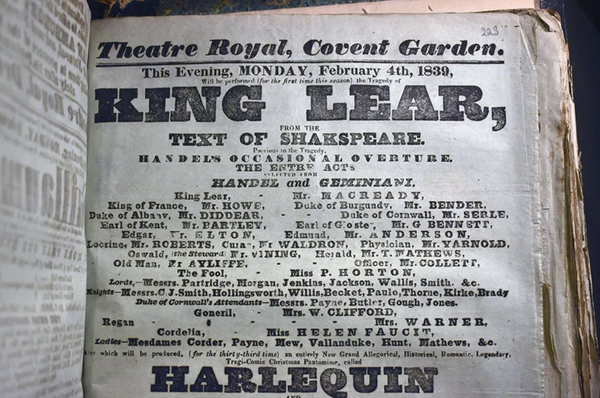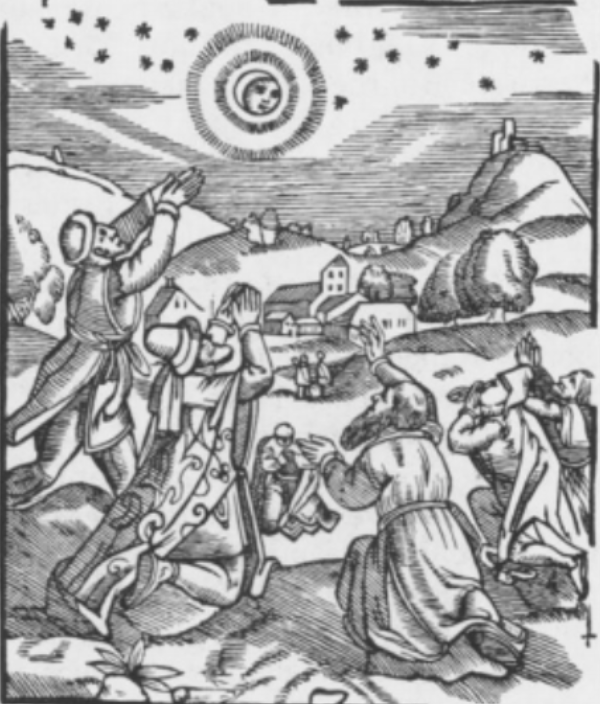The Hatch and Brood of Time
Volume 6: November 2, 2020 By London Johns
Throughout the centuries since Shakespeare’s death, countless conspiracy theories about his grave have risen and been put to rest. The combination of Shakespeare’s fame and the curse inscribed on his gravestone inspired theories that his gravestone was a code used to reveal the “true” author of his plays, that the skeleton beneath it was buried seventeen feet underground, and that Shakespeare’s body was buried vertically (Brown 2016). Of course, most of these theories were confirmed false. However, one held more truth than the others. An investigation of Shakespeare's grave in 2016 confirmed that while most of Shakespeare’s skeleton was intact, his skull was missing (Brown 2016). This discovery, alongside a number of other odd characteristics of the grave, raised questions about interference and grave robbery occuring more than a hundred years after Shakespeare’s death.
Shakespeare’s grave was unusual in several ways. First, he was buried without a coffin (Brown 2016). This was not too uncommon; coffins were used by the rich, and Shakespeare likely died moderately wealthy, but not extremely so. In 1613, three years before his death, he had only £80 handy to buy a £140 gatehouse, and had to take out a mortgage (Nelson). Second, his grave was only three feet deep (Brown 2016). Third, Shakespeare’s gravestone is the only one out of his family’s graves that did not include his name (“Shakespeare Family…”); instead, it bore his famous curse: “Good frend for Jesus sake forbeare/to digg the dust enclosed heare/Bleste be ye man yt spares thes stones/and curst be he yt moves my bones” (Holy Trinity Church 2020). Last, when searching the grave with ground-penetrating radar, a team of archaeologists found “signs of disturbance” near where Shakespeare’s skull should have been and a “very strange brick structure” that cut across that section of the grave (Brown 2016). They interpreted this as evidence that part of Shakespeare’s grave had been dug out and his skull stolen.
The robbery of Shakespeare’s skull could easily have gone unrecorded. Luckily, one article may explain how Shakespeare’s head disappeared from his grave. An 1884 account by “a Warwickshire man” describes how his friend, Frank Chambers, wrote in his diary about debating whether a likeness of Shakespeare depicted him accurately. According to the Warwickshire man, this conversation resulted in a bet for 300 pounds with whoever could dig up Shakespeare’s head; a Dr. Parr said that if anyone could “thteal away hith brainth, [300 pounds] were cheap to him” (A Warwickshire man 10). Four men, Frank Chambers (the author of the diary), Harry Cull, Tom Dyer, and Mr. Hawtin, decided to attempt the deed. The Warwickshire man described how they crept into the church by night, began digging at the wrong grave, and had to restart at the correct one before finally finding the skull.
Until recently, the graverobbers’ tale had been rejected as false. However, the details of the article were consistent with what modern scans of Shakespeare’s grave have confirmed. They mentioned digging down three feet, the depth discovered by archaeologists in 2016 (Brown 2016), and finding no coffin, which was also confirmed by the archaeologists’ findings. The account described Harry Cull reaching blindly for the skull and instead pulling out a “huge grey stone” (A Warwickshire man 18), which could account for the strange obstruction near the head area of Shakespeare’s grave. Interestingly, they also described finding a worn ring inscribed with the letters “GU-LM-S” and “H.S. or I.H.S.” (17); but though a ring possibly belonging to William Shakespeare was found near Holy Trinity Church fifty years before the story was published (Hewitt 2012), the ring referred to in the account has never been found. According to the Warwickshire man’s memories of his friend’s diary, Tom Dyer was charged with returning the skull after the bet was complete; however, he never finished that task. Dyer supposedly left the skull in a vault at another chapel, marked so that it could be identified by his co-conspirators (37).
This would not have been an unfamiliar kind of story at the time. One well-known kind of grave robbing in the 18th and 19th centuries was body snatching, the practice of stealing bodies from graves for use in medical and anatomical study. The fascination with dead bodies did not always require the entire corpse; particularly in the early to mid 19th century, skulls were used for phrenology, or the study of character based on the shape of the skull. Even before phrenology was invented, the shape of the skull held particular significance. Physiognomy, the practice of interpreting one’s personality based on facial features, began in the ancient world and experienced renewed interest during the Renaissance and the 19th century. Though the study of facial features did not directly require skulls, some significant traits in physiognomy relied on the skull’s shape; according to a 1528 book on physiognomy, “if the scull shall be small, then will the braine be like,” and “if the same be cor∣rupted, then is the forme of the braine like corrup∣ted” (Hill 24). These theories drew public interest to skulls. Individuals kept collections of skulls, both animal and human. Ann Fabian’s book The Skull Collectors detailed how Samuel George Morton, an American physician, collected a thousand human skulls in an attempt to categorize racial groups (work now infamous for its racism); in turn, Morton’s skull was dissected upon his death. Fabian noted that the skulls of Descartes, Oliver Cromwell, and various saints were on display in Europe. These, Fabian wrote, were “celebrated heads” of “geniuses, martyrs, and holy men and women” (11). Their heads likely drew attention not only because viewers wanted to see the heads of famous figures, but because they believed that attributes of the skulls may set them apart from regular people, and that those attributes would be revealed with study. For example, Morton believed that increased skull size signified increased intelligence; if that were true, it could mean that the brains of geniuses were particularly large.
Discovering the fate of Shakespeare’s skull would certainly be easier with access to his body itself, but it is unlikely that any project will be allowed access to Shakespeare’s body. Multiple requests have been made to exhume Shakespeare’s grave in search of information about his lifestyle, burial, and cause of death. However, every request has been rejected. The warning on his grave is a major reason to deny any requests to disturb his bones, and not only because whoever interfered with them might have to suffer the effects of a curse. Shakespeare’s “curse” was an unusual epitaph; its purpose was less sentimental and more practical, as it prevented his body from being moved from its grave to a charnel house or his grave from being opened for any reason (except, as it turned out, for the robbery of his skull) (Newstok 163). His epitaph expressed a genuine fear that his corpse would be disturbed. This trepidation took form in several of his plays. In Act V Scene I of Hamlet, for example, the gravediggers who rearranged old skeletons to make way for Ophelia’s body showed little respect for the dead, and their lack of respect was shown through the way they moved bones: “That skull had a tongue in it and could sing once. How the knave jowls it to the ground, as if it were Cain’s jawbone, that did the first murder!” (Shakespeare 243). It is ironic that, despite his epitaph, this was likely the same fate that befell Shakespeare’s own skull.
Though the motive behind the robbery of Shakespeare’s skull may have been nothing deeper than a bet between friends, it was the indirect result of a cultural fixation with the body as a physical representation of the mind. An empty skull was all that Frank Chambers and his companions would find in Shakespeare’s grave, yet Dr. Parr expected them to bring back “hith brainth”. To Dr. Parr, Shakespeare’s skull was valuable because it was a genius’s skull, and a genius’s skull housed a genius’s brain. It would be simple to attribute this entirely to the scientific trends of phrenology and physiognomy; however, this fixation still exists. The brains of famous figures, including Albert Einstein and Vladimir Lenin, have been dissected and studied to find the source of their uniqueness. As long as the idea of genius perseveres, answers will be sought in genius’ bodies. But bones are bones, and as the Warwickshire Man wrote about bringing back Shakespeare’s skull from its grave, “‘any skull from the charnel-house close by… would have answered fully as well, without the labor” (18).
Works Cited
Austin, William. “The Anatomist Overtaken by the Watch... Carrying off Miss W--Ts in a Hamper.” 1 May 1773. U.S. National Library of Medicine, NIH, collections.nlm.nih.gov/catalog/nlm:nlmuid-101447892-img.
A Warwickshire Man. How Shakespeare's Skull Was Stolen and Found . London: E. Stock, 1884.
Brown, Mark. “Shakespeare's Skull Probably Stolen by Grave Robbers, Study Finds.” The Guardian, Guardian News and Media, 23 Mar. 2016, www.theguardian.com/culture/2016/mar/23/shakespeare-stolen-skull-grave-robbing-tale-true.
Hewitt, Peter. “Shakespeare's Signet Ring.” Shakespeare Birthplace Trust, Shakespeare Birthplace Trust, 19 Nov. 2012, www.shakespeare.org.uk/explore-shakespeare/blogs/shakespeare-100-objects-shakespeares-signet-ring/.
Hill, Thomas. A pleasant history declaring the whole art of phisiognomy orderly vttering all the speciall parts of man, from the head to the foot. London: Printed by W. Iaggard, 1613; Ann Arbor: Text Creation Partnership, 2011. http://name.umdl.umich.edu/A04486.0001.001.
Holy Trinity Church. “Shakespeare's Burial Monument and Grave.” Shakespeare Documented, 3 Feb. 2020, shakespearedocumented.folger.edu/resource/document/shakespeares-burial-monument-and-grave.
Nelson, Alan H. and Folger Shakespeare Library staff, "Shakespeare purchases the Blackfriars Gatehouse: Mortgage, signed by Shakespeare," Shakespeare Documented, https://doi.org/10.37078/115.
Newstok, S. Quoting Death in Early Modern England: the Poetics of Epitaphs beyond the Tomb. Palgrave Macmillan, 2014.
“Shakespeare Family Gravestones.” Shakespeares Church - Holy Trinity, www.stratford-upon-avon.org/shakespeare-family-graves.
Shakespeare, William. Hamlet. Edited by Barbara Mowat and Paul Werstine, Folger Shakespeare Library, The Folger Shakespeare, shakespeare.folger.edu/.







